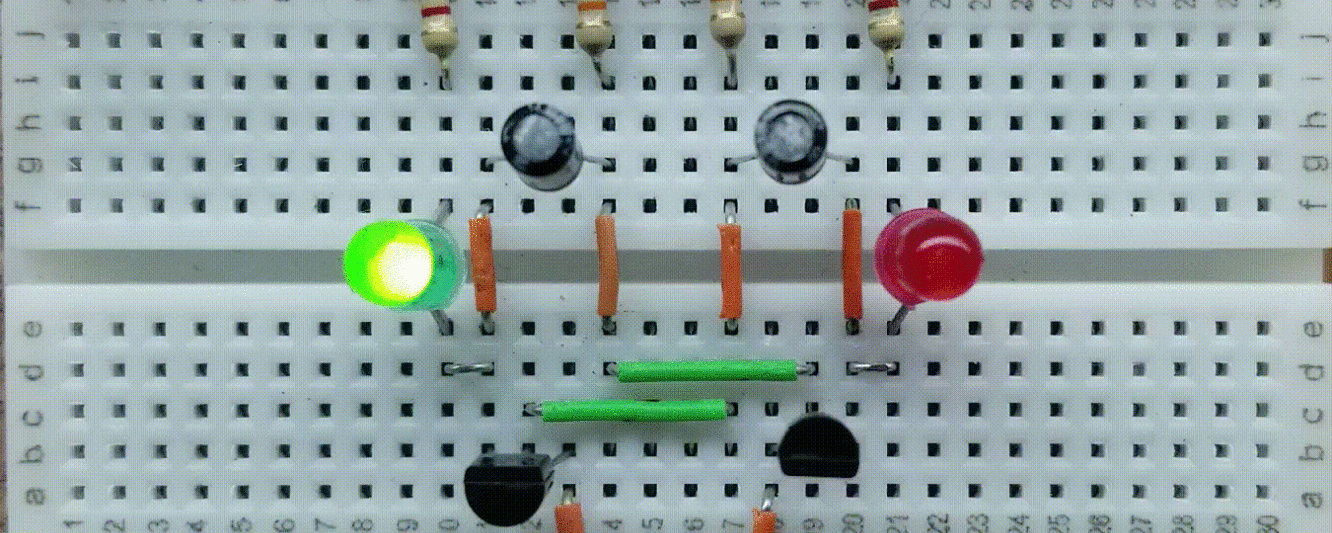Basic Breadboarding Equipment and Supplies
Assembling, testing and operating breadboards can be done with a minimal amount of supporting equipment.
At a basic level, you’ll need at least the following if you want to breadboard circuits:
- A dedicated work area – such as a bench
- A work surface such as mat
- A collection of breadboards
- Jumper wires
- Breadboarding tools such as tweezers and/or hemostats, small screwdrivers, wire cutters, and wire strippers.
- Safety glasses to protect your eyes
- Basic discrete components such as resistors, capacitors, general purpose transistors, potentiometers
- Test and measurement tools such as a multimeter, oscilloscope, and signal generator
Dedicated Work Area
A dedicated work area such a a table or bench with a shelf. A set of drawers for storage is a huge help. Here is a step by step video I made for how to build an Electronics Workbench.
A Work Surface
A work surface will help protect your bench and your electronics from static electricity. For general construction of breadboards where static electricity is not a concern, cork boards work well. Here is a link to such Cork Boards.
For general use or breadboards that use CMOS or other static sensitive components, I recommend a silicon anti-static mat with a wrist strap. Here is a link to an Anti-Static Mat I recommend.
A Collection of Breadboards
Of course, you’ll need breadboards. Here is a set of Breadboards I recommend. If you breadboard circuits often, you’ll likely want at least two set of these.
Jumper Wires
Standard jumper wires for breadboards traditionally followed the “Ohm’s law” color scheme for their lengths – i.e. red for jumping 2 points, orange for 3 points, yellow for 4 points, etc. Lately, many jumper wire kits seem to have assigned random colors to their lengths. I recommend the Circuit-Test brand of traditional Ohm’s law color coded jumpers here.
In addition, I recommend these Flexible Jumper Wires that are useful for connecting breadboards together and that you’ll find many other uses for.
Test and Measurement Tools
There are certainly cheaper test and measurement tools available. Quality, accurate tools will make breadboarding easier and will last a long time. The following are ones I suggest based on experience.
Triple output Digital Power Supply
A dedicated accurate multimeter (Fluke 115)
An additional lower cost multimeter (Klein MM300)
Klein CL800 multimeter/clampmeter
A signal generator (Koolertron 15Mhz Programmable)
An oscilloscope (Sigilent 50Mhz 2-channel)
Breadboarding Tools
At minimum, you’ll need these linked tools to effectively breadboard.
Small insulated screwdriver set
Safety Glasses
Safety glasses are a good idea. Reversed polarity caps can easily pop open and sometimes result in flying debris. Better safe than sorry.
Basic Discrete components
Here are some recommended discrete components with associated links that will help make breadboarding painless and productive.
1/4 watt carbon resistor assortment
Electrolytic capacitor assortment
General purpose transistor assortment that includes the 2n3904 (NPN) and 2n3906 (PNP) transistors
10 piece LED display Kit (common cathode)
10 piece LED display Kit (common anode)
We are a participant in the Amazon Services LLC Associates Program, an affiliate advertising program designed to provide a means for us to earn fees by linking to Amazon.com and affiliated sites.
We are a participant in the Commission Junction Affiliate Program, an affiliate advertising program designed to provide a means for us to earn fees by linking to Commission Junction and affiliated sites.
